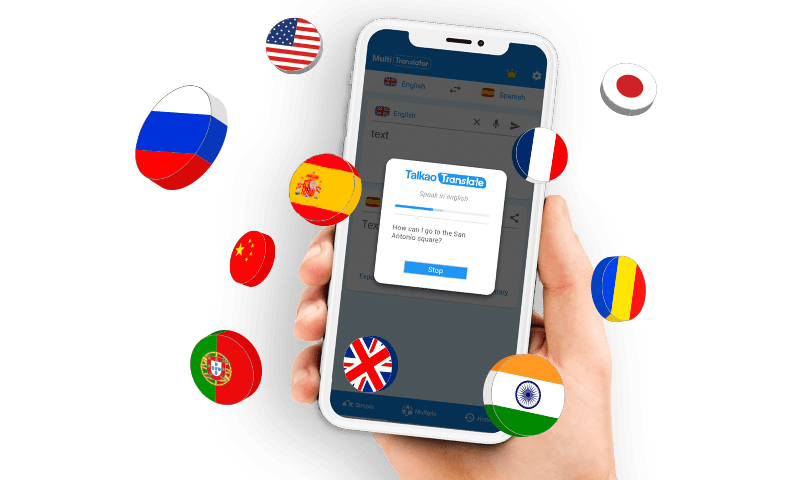
From the outside, it’s easy to assume that linguists, translators, and simultaneous interpreters all do the same job, right? It’s completely natural—without a deep understanding of the field, anyone might confuse the roles of these professionals. After all, they all deal with translation and help bridge communication between people who speak different languages.
But the reality is that there are significant differences between these three roles. Each one involves specific training, unique skill sets, and very distinct goals.
Since this confusion is so common among those who aren’t deeply familiar with the subject, we decided to take a closer look. We did some digging to better understand the distinctions between linguists, translators, and simultaneous interpreters—and we found some surprising insights you’re about to discover.
As you’ll see in the next few paragraphs, each of these professionals serves a unique purpose, backed by different expertise and very different educational backgrounds. This is definitely going to be an eye-opening read. Stay with us until the end to explore the fascinating world of language from a whole new perspective.
But first, let’s clarify what each of these roles actually involves…
What does a linguist do?
Before we dive in, there’s one key point to clarify: there’s no professional hierarchy between linguists, translators, and simultaneous interpreters. In other words, none of these roles is superior or more qualified than the others. They are three distinct professions, each with its own goals, training, and methods. Every one of them brings unique value to different types of clients and situations. So, let’s start by discarding the idea that one is better or worse than the other.
With that out of the way, let’s begin this breakdown by examining the roles, training, and responsibilities of linguists. These professionals specialize in the scientific study of language and how it functions as a social phenomenon. While linguistics is often considered a branch of anthropology, linguists themselves are experts with deep academic training focused on language.
Unlike translators or interpreters, a linguist’s primary job is not to translate content from one language to another. Instead, they analyze how human language works—its structures, patterns, and usage in society.
Linguistics is divided into multiple branches
Because of their academic background, linguists often specialize in different subfields, such as:
- Phonetics and Phonology – The study of speech sounds from both anatomical and cognitive perspectives.
- Morphology – The analysis of how words are formed and structured.
- Syntax – The study of sentence structure and grammatical rules.
- Semantics – Focused on the meanings of words and how they’re interpreted.
- Pragmatics – Examines how language is used in real-life social contexts.
Additionally, many linguists work in applied areas like second language acquisition, language planning, computational linguistics, and even the creation of artificial languages—think Esperanto or the fictional Klingon from Star Trek.
Linguists generally study language as a human phenomenon, not just a single language. This makes their work incredibly valuable, even if it doesn’t seem directly related to translation at first glance.
Why linguists are essential in language studies
As we’ve mentioned, linguists play a crucial role in understanding how languages function. Their academic training enables them to explore the structure, usage, and evolution of languages—both in formal systems and in social interaction.
Linguists examine language across all levels: from individual sounds and word formation to sentence construction and meaning. They also explore how languages have changed over time and investigate the historical influences behind linguistic variation.
Importantly, linguists study how people use language in different social and cultural contexts, analyzing the effects of environment, interaction, and tradition. They go even further by developing theories and models about the nature of language itself—foundational work that supports both translators and interpreters in their practical roles.
How linguists relate to translators and interpreters
Put simply, a linguist can be thought of as the theorist behind language and all its complexities. This includes the study of how people acquire language, how language is processed in the brain, and how it can be taught effectively. These insights are vital for creating better teaching methods and for understanding the obstacles learners face when acquiring a new language.
As professionals, linguists investigate language-related issues, develop solutions, and aim to grasp language’s evolution and role in society. Their research provides a deep foundation for understanding human communication and its cultural implications—knowledge that is absolutely essential for translators and interpreters to do their jobs effectively.
So, what about translators? What exactly do they do?
We’ll explore that in the next section.

The translator as a linguistic and social bridge
We’ve already established that linguists are the professionals who study and explain language as a human phenomenon. However, linguists are not always involved in transferring content from one language to another. This is where translators come into play, serving as the ideal professionals to bridge communication gaps between people who don’t speak the same language.
In simple terms, a translator is a professional who converts written text from one language into another. But this process goes far beyond simply replacing words—something a dictionary could do. A translator must understand and interpret context, tone, style, and often even the intent behind the message of the original author.
While we’re focusing here on written translation (and we’ll later see that this isn’t the only kind), translators can specialize in various fields, including:
Literary translation
Literary translators work with novels, poems, short stories, and other creative works. Their job isn’t just to convert the text literally—they must also capture the tone, nuance, and direction of the original piece. As we’ve seen with examples like Bible translations, a poorly rendered translation can completely distort the original meaning. That’s why this specialization requires a literary mindset and sensitivity to style.
In other words, a literary translator is also a kind of writer—one who can recreate the original text in another language, preserving its artistic essence. The work goes far beyond transferring words; it involves reimagining the piece for a new audience.
Technical translation
This area of translation is somewhat similar but involves specialized technical knowledge. Instead of translating literary content, technical translators work with manuals, guides, and documentation—often in fields like engineering, IT, or science.
For example, a translator working on a software manual must be familiar with the terminology and technical jargon specific to that field. They need to understand the content well enough to communicate it clearly and accurately, without introducing mistakes or changing the intended meaning. A solid understanding of the subject matter is essential in technical translation.
Legal translation
Legal translation is another highly specialized field that comes with extra complexity. It’s not just about translating legal texts word-for-word; the translated content must fit the legal framework of the target language without altering the original meaning—a real challenge.
Legal translation is crucial in judicial and criminal proceedings, especially between countries with different official languages. It’s also used in international business, multinational lawsuits, and other formal legal processes. Because of the high stakes, many countries require translators to be certified to handle these documents. Courts often rely on official translators to ensure the accuracy and validity of translated materials.
Medical translation
The language of medicine can feel like a different language altogether. Medical texts are full of technical terms and domain-specific expressions. A translator working in this field must be familiar with medical terminology, classifications, and professional language to ensure an accurate translation.
Imagine a misdiagnosis caused by a translation error, or taking the wrong medication due to a mistranslated prescription. The consequences could be serious—even life-threatening. That’s why expertise and precision are non-negotiable in medical translation.
Are all translations written?
Not necessarily. Unlike linguists, translators have a practical and communicative focus. They typically master both the source language and the target language, with the aim of producing a translation that feels natural to the reader while preserving the meaning of the original.
That said, not all source material is written. Translators may also work with speeches, songs, films, or even casual conversations. However, the end result is usually a written document.
Let’s clarify: a translator may take a spoken or written message in one language and convert it into written form in another. In some cases, this process can go from audio to audio—something increasingly common today thanks to the rise of multimedia content.
Still, it’s important to note that not all translators work with audio content. This often falls under a different specialization more closely related to interpreters or simultaneous translators.
Let’s now take a closer look at how interpreters differ from written translators, and why their work is so essential in live, real-time communication.
What is a simultaneous interpreter?
Now that we’ve explored what linguists and translators do, it’s time to dive into the world of simultaneous interpreters. This professional profile plays a key role in today’s globalized world, where the flow of multilingual information is constant—especially in conferences, negotiations, and international events. And of course, let’s not forget the impact of live streaming and the vast amount of content on social media.
In today’s era of instant communication, it seems we can’t afford to lose even a second trying to understand something—especially when it’s not in our language. Reading subtitles often isn’t fast enough, or may be out of sync. That’s why simultaneous interpreters have become more essential than ever.
However, it would be a major mistake to think that simultaneous interpretation is a modern invention. Far from it! In fact, you could say it was one of the earliest forms of communication between people who spoke different languages. From Marco Polo’s interpreters to those accompanying European explorers in the Americas, these professionals have always been crucial to the development of civilizations.
But what exactly do simultaneous interpreters do?
Speed, accuracy, and deep knowledge: The three pillars of simultaneous interpretation
First, it’s important to understand that simultaneous interpretation is a form of oral translation. The term “simultaneous translator” is commonly used in everyday language, but technically speaking, a translator works with written text, while an interpreter works with spoken language.
A simultaneous interpreter listens to a speaker and translates the message into another language in real time, with only a brief delay of a few seconds. This process happens without pauses, requiring extreme focus and mastery of both languages involved.
These professionals often work inside soundproof booths with specialized equipment, though they are also commonly seen in virtual events. Another widely used method is called “whispered interpretation” or chuchotage, used when there is only one listener. You’ve probably seen this during diplomatic meetings—the person always whispering next to a president or high-ranking official.
Essential skills for simultaneous interpreters
In addition to extensive training, simultaneous interpreters must develop a specific set of skills, such as:
- High-level concentration and short-term memory
- Perfect command of both working languages
- Quick thinking and strong improvisation skills
- Clear pronunciation and a well-trained voice
- Intercultural empathy and professional discretion
As you can see, this is not an easy profession. It requires outstanding communication skills and represents a significant intellectual challenge—especially because of the high-stakes environments in which these professionals often work.

Can anyone be a simultaneous interpreter?
The short answer is no. Beyond mastering a language fluently, simultaneous interpreters possess a unique set of skills that go well beyond vocabulary and grammar. Their job is not about translating word-for-word. Instead, they must capture the overall meaning, tone, and speaker’s intent, while culturally adapting the message for the target audience.
Some of the most important tasks of a simultaneous interpreter include:
- Interpreting conferences, summits, and international forums
- Facilitating communication in diplomatic meetings or business negotiations
- Translating during press conferences, academic or institutional events
- Participating in sessions for multilateral organizations such as the UN or the EU
- Collaborating in multilingual virtual events
As you can see, their role is crucial for global communication. Thanks to their work, people from different cultures and languages can connect and understand each other—without barriers.
However, there’s good news: today, you can enjoy real-time translation without the years of intense training professional interpreters go through. How? With Talkao’s AI-powered Real-Time translation tools.
Effortless real-time translation thanks to AI
Translation is a highly respected profession across the globe. Linguists, translators, and simultaneous interpreters all hold important roles in modern society. Their dedication is evident in the accuracy, nuance, and clarity of their work, and their impact on global communication is undeniable.
But outside of high-level settings—like presidential summits or international conferences—everyday users still need translation tools constantly. Whether it’s for simple text translations or translating full documents, the demand is huge.
Of course, hiring a professional interpreter is not always feasible. It requires careful logistics and financial resources that not everyone has access to. That’s why Talkao’s translation tools are a game changer—bringing the power of professional translation right to your pocket.
Translate anywhere, anytime
No need for expensive equipment or complex software. With just your smartphone, you can translate into over 125 languages. Talkao’s AI translation features allow you to translate text, documents, and even images in seconds—with ease and accuracy.
And with real-time conversation translation, you can effortlessly interpret any spoken exchange—regardless of language, accent, tone, or dialect. Everything happens in just seconds, offering one of the most accurate translation experiences on the market today.
Download the Talkao apps and tools, and enjoy seamless, smart, and highly practical translations—anytime, anywhere.








Newsletter